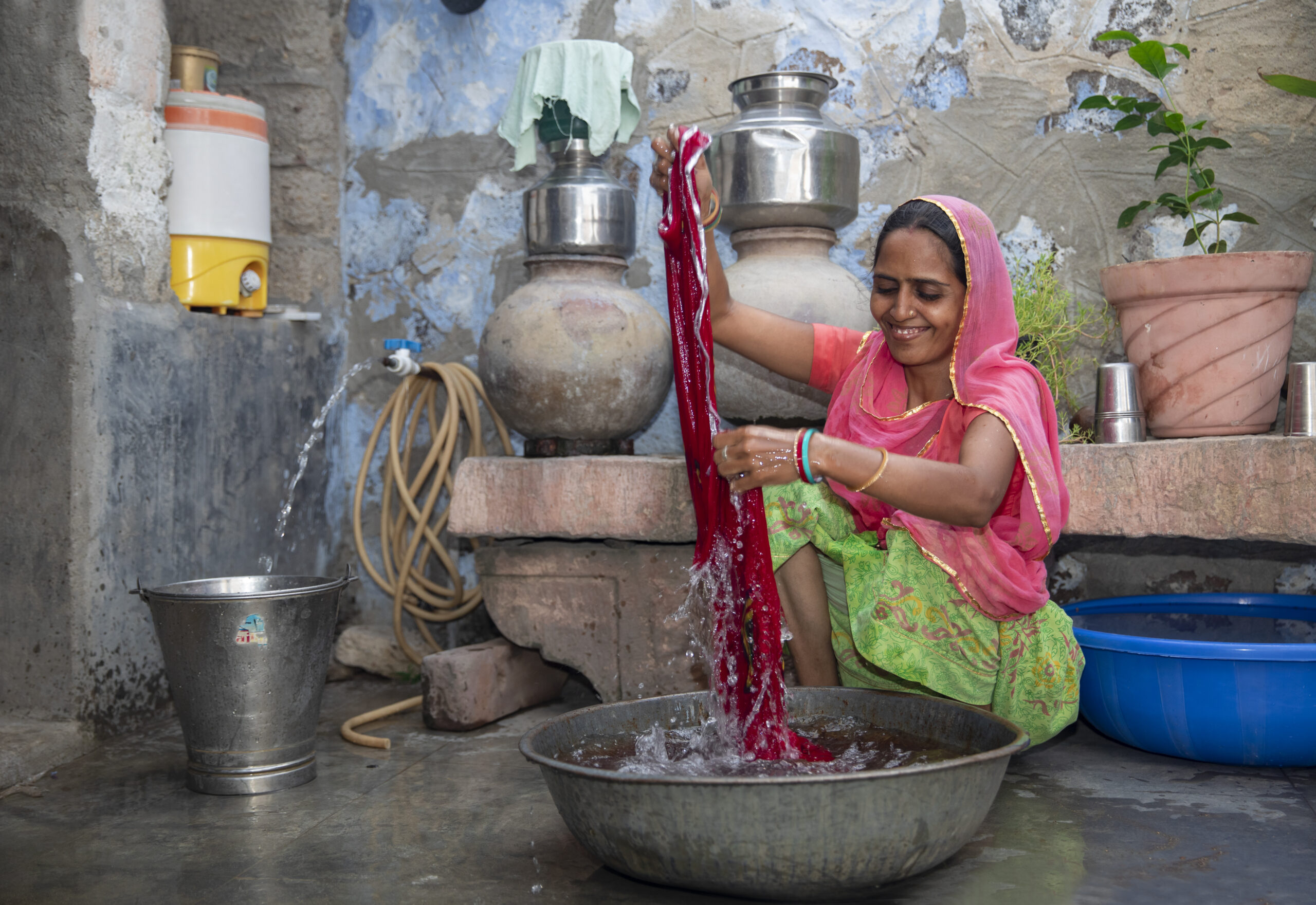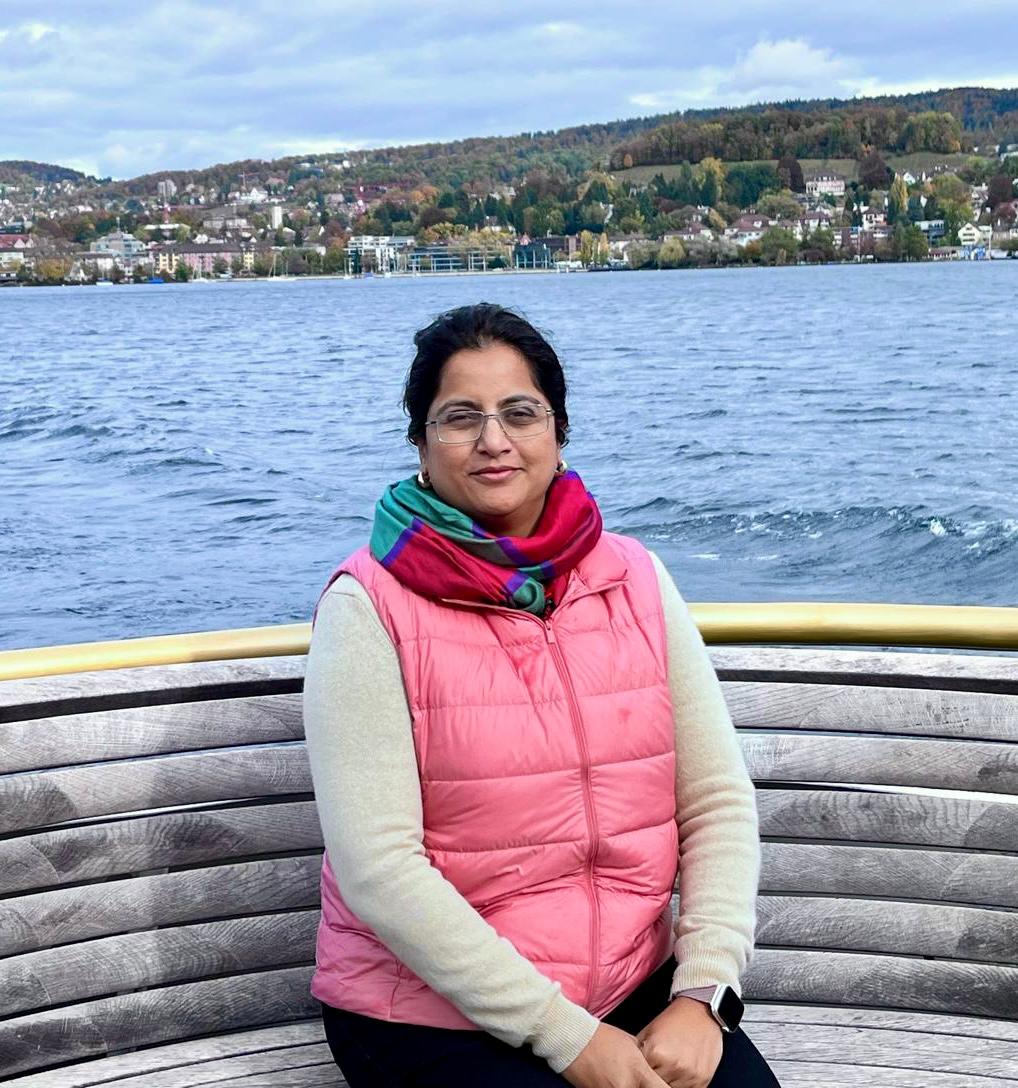In the remote village of Umla, nestled at an altitude of 13,900 feet in Ladakh, life used to be a daily battle against nature. For Tsewang Dolma[i] and her family, fetching water meant trekking through snow and braving sub-zero temperatures. This arduous task consumed hours of the day, leaving little time for education, livelihood, or community activities. Today, thanks to the Jal Jeevan Mission (JJM), every household in Umla has access to tap water, transforming lives and aspirations in a tough landscape. Tsewang’s children now spend their mornings preparing for school, while she can focus on skill development and economic opportunities. This story is just one of many across India where access to basics like water is changing lives. With the Jal Jeevan Mission ensuring essentials are met, people can now focus on building brighter futures.
Life Before Jal Jeevan Mission
Before the launch of JJM, access to clean drinking water was a distant dream for crores of rural households in India. Out of 18.93 crore rural households[ii], only 3.23 crore, or 17 percent, had access to tap water. Women and children bore the burden of fetching water from distant sources, a time-consuming task that hindered education, limited livelihood opportunities, and heighten health risks. Waterborne diseases were rampant due to reliance on unsafe water sources, adding to the economic strain on rural families.
According to the WHO, achieving saturation under JJM will save more than 5.5 crore hours every day, which are otherwise spent collecting water for household needs, primarily by women. This massive time-saving empowers women to invest in education, livelihoods, and family care. [iii]
Since its launch in August 2019, the Jal Jeevan Mission has brought about unmatched progress in rural water access.
As of February 2024, over 14.24 crore households, accounting for nearly 73.93 percent of rural India, now have functional tap water connections.[iv] States such as Goa, Haryana, and Telangana, along with union territories like Puducherry, have achieved 100 percent coverage, a status celebrated under the Har Ghar Jal initiative.[v]
Jal Jeevan Mission: A Game Changer
Notably, the World Health Organization (WHO) estimates that ensuring safely managed drinking water for all households in the country could prevent nearly 4,00,000 deaths caused by diarrheal diseases, saving approximately 1 crore 40 lakhs Disability Adjusted Life Years (DALYs). This shows the mission’s profound health benefits.
This remarkable progress reflects the government’s commitment to inclusive development and the participatory approach of JJM, which places communities at the forefront of implementation. Not just this the estimated outlay of ₹3.60 lakh crore for JJM has funded infrastructure and has also created significant employment opportunities in rural areas[vi].
A report by the Indian Institute of Management Bangalore (IIMB), in partnership with the International Labour Organisation (ILO), estimates that JJM will result in 59.9 lakh person-years of direct and 2.2 crore person-years of indirect employment during its capex phase.[vii]
Local youth are being trained as masons, plumbers, electricians, and pump operators, providing them with livelihood options closer to home. This has reduced migration to urban areas and contributed to the economic resilience of rural communities.
Improving Health and Education
The impact of JJM on health and education is profound. The availability of clean drinking water has significantly reduced the prevalence of waterborne diseases like diarrhea and cholera.[viii] Improved health indicators have led to lower healthcare expenses for rural families and better quality of life overall. In schools and Anganwadi centers, access to tap water has fostered improved hygiene and sanitation.
Over 81.4 percent of schools and 76.5 percent of Anganwadi centers now have functional tap water connections.[ix] This has resulted in higher attendance rates, particularly among girls, who no longer miss school due to water-related chores or illnesses.
Empowering Women and Communities
PM Modi’s vision for the Jal Jeevan Mission (JJM) isn’t just about providing water—it’s about transforming lives and empowering communities. His focus has been on giving women and children the freedom to live better lives. By ensuring access to safe drinking water in every household, women are no longer burdened with the daily task of fetching water.[x] This has opened up opportunities for them to focus on education, earn a living, and even take on leadership roles in their villages.
What makes this vision truly inspiring is the emphasis on women as change-makers. With every second woman (50%) represented in Village Water and Sanitation Committees, women are now at the forefront of decisions that directly impact their communities.[xi]
Training five women in every village to test water quality shows just how deeply PM Modi’s vision values inclusivity and sustainability.[xii] It’s not just about water—it’s about building a future where women lead, contribute, and thrive.
Leveraging Technology for Sustainability
JJM has seamlessly integrated technology into its framework to ensure transparency and efficiency. Real-time monitoring of water supply is enabled through IoT-based sensors, while over 2,000 water-testing laboratories across the country ensure the quality of drinking water.[xiii]
The establishment of a Water Quality Management Information System has empowered local communities to monitor and manage their water resources effectively, enabling their first-hand participation into the governance while making them more accountable and sustainable.
JJM is more than just about delivering water, it is also about ensuring its sustainable management. The program emphasizes greywater management, encouraging its reuse in agriculture and other activities.[xiv] Village Action Plans are prepared with active community participation, ensuring that the infrastructure created under JJM remains functional and well-maintained.
A Model of Good Governance
As India, the world’s largest democracy celebrates Good Governance Day, the Jal Jeevan Mission stands out as a shining example of effective governance. It is the prime example of the principles of Sabka Saath, Sabka Vikas, Sabka Vishwas, Sabka Prayas, highlighting how participatory and decentralized governance can drive transformative change.
JJM’s journey, from the snow-laden hamlets of Ladakh to India’s remotest districts, has been one of transformation- proving that tangible progress begins with access to the basics. As it advances, it lays the groundwork for a nation where welfare flows to every home, every community, and every dream.
References:
[i] https://jalshakti-ddws.gov.in/sites/default/files/JJM_booklet_en.pdf pg-26
[ii] https://jalshakti-ddws.gov.in/sites/default/files/JJM_booklet_en.pdf pg 8
[iii] https://pib.gov.in/PressReleasePage.aspx?PRID=2042989
[iv] https://pib.gov.in/PressReleaseIframePage.aspx?PRID=2003912
[v] https://jaljeevanmission.gov.in/media/seven-states-uts-achieve-100-piped-water-connection-goal
[vi] https://jaljeevanmission.gov.in/sites/default/files/guideline/JJM_note.pdf pg 2
[vii] https://pib.gov.in/PressReleasePage.aspx?PRID=2042989
[viii] https://pib.gov.in/PressReleaseIframePage.aspx?PRID=1946479
[ix] https://jaljeevanmission.gov.in/sites/default/files/2024-04/Functionality-Assessment-National-Report-2020.pdf
[x] https://ddnews.gov.in/en/jal-jeevan-mission-empowering-women-in-rural-areas-pm-modi/
[xi] https://jaljeevanmission.gov.in/sites/default/files/publication_and_reports/101-glimpses-of-women-power.pdf
[xii] https://jaljeevanmission.gov.in/sites/default/files/manual_document/JJM-Reform-Document-English.pdfPg11
[xiii] https://pib.gov.in/PressReleasePage.aspx?PRID=1708701
[xiv] https://pib.gov.in/PressNoteDetails.aspx?NoteId=153255&ModuleId=3®=3&lang=1







